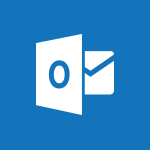SharePoint (Classic Sites) - Recovering deleted items (Recycle bin and Second-stage recycle bin) Video
In this video, you will learn about recovering deleted items using the Recycle Bin and Second-stage Recycle Bin in SharePoint.
The video covers how to access the Recycle Bin on both SharePoint communication sites and SharePoint team sites, as well as the necessary permissions required.
It demonstrates how to restore a document from the Recycle Bin and explains that if the document was contained in a deleted folder, SharePoint will automatically recreate it.
The video also mentions the option to remove a document from the Recycle Bin, which sends it to the Second-stage Recycle Bin.
It emphasizes the importance of visiting the Second-stage Recycle Bin if a document cannot be found in the main Recycle Bin.
However, it warns that if a document is deleted from the Second-stage Recycle Bin, it will be permanently deleted and cannot be restored after 93 days.
This knowledge will help you effectively recover deleted items in SharePoint and avoid permanent deletion.
- 2:18
- 4849 views
-
SharePoint (Classic Sites) - Creating a permission group
- 3:53
- Viewed 2726 times
-
SharePoint (Classic Sites) - Creating a personalized permission level
- 2:46
- Viewed 2906 times
-
SharePoint (Classic Sites) - Restoring an earlier version of your document
- 1:50
- Viewed 3036 times
-
SharePoint (Classic Sites) - Granting access to the SharePoint site to someone outside the company
- 3:46
- Viewed 3199 times
-
SharePoint (Classic Sites) - Sharing a folder or document with someone outside the company
- 3:44
- Viewed 2904 times
-
SharePoint (Classic Sites) - Targeting content using a specific audience
- 3:35
- Viewed 2920 times
-
SharePoint (Classic Sites) - Restricting a document to read-only mode (Extract a document)
- 2:05
- Viewed 2821 times
-
SharePoint (Classic Sites) - Checking the granted shares
- 2:27
- Viewed 2852 times
-
Protect a document shared by password
- 1:41
- Viewed 9553 times
-
How do I prevent the transfer of an email?
- 2:07
- Viewed 8600 times
-
How do I block a sender?
- 1:01
- Viewed 3786 times
-
How do I share a document securely with Outlook?
- 1:49
- Viewed 3527 times
-
Create and manage team channel
- 1:51
- Viewed 3384 times
-
Do I share with OneDrive, SharePoint, or TEAMS?
- 2:24
- Viewed 3329 times
-
Manage permissions
- 1:10
- Viewed 3243 times
-
Restrict a folder/document to certain members of your team
- 1:49
- Viewed 3220 times
-
Restrict a document to reading only
- 1:03
- Viewed 3204 times
-
Granting access to the SharePoint site to someone outside the company
- 3:46
- Viewed 3199 times
-
How do I recognize a fraudulent email?
- 2:01
- Viewed 3041 times
-
Restoring an earlier version of your document
- 1:50
- Viewed 3036 times
-
Targeting content using a specific audience
- 3:35
- Viewed 2920 times
-
Creating a personalized permission level
- 2:46
- Viewed 2906 times
-
Sharing a folder or document with someone outside the company
- 3:44
- Viewed 2904 times
-
Understanding the different types and roles of team sites in SharePoint
- 3:05
- Viewed 2861 times
-
Checking the granted shares
- 2:27
- Viewed 2852 times
-
Restricting a document to read-only mode (Extract a document)
- 2:05
- Viewed 2821 times
-
How to protect an email by encryption?
- 2:41
- Viewed 2772 times
-
Creating a permission group
- 3:53
- Viewed 2726 times
-
Ensure data security during a Teams meeting
- 1:48
- Viewed 2640 times
-
General security practices in Outlook
- 1:03
- Viewed 2591 times
-
Manage permissions
- 1:03
- Viewed 1636 times
-
Understand and Secure Information Sharing in Instant Messaging
- 2:38
- Viewed 1037 times
-
Manage Privacy in Private Channels
- 2:34
- Viewed 829 times
-
Restrict a Document to Certain Team Members
- 1:50
- Viewed 821 times
-
Secure Teams Upon Creation
- 2:57
- Viewed 802 times
-
Secure a Shared Document with a Password
- 1:28
- Viewed 790 times
-
Restrict a Document to Read-Only
- 0:58
- Viewed 786 times
-
Check Granted Shares
- 00:48
- Viewed 430 times
-
Protect My Document with a Password and Expiration Date
- 01:02
- Viewed 375 times
-
Modify Sharing Rules
- 00:53
- Viewed 375 times
-
Recover deleted items
- 01:09
- Viewed 361 times
-
Best Security Practices on OneDrive
- 01:27
- Viewed 357 times
-
Restore Your OneDrive Space
- 01:42
- Viewed 347 times
-
Avoid Abusive Document Sharing
- 00:57
- Viewed 333 times
-
Block a sender
- 01:54
- Viewed 280 times
-
Recall or replace an e-mail message
- 01:45
- Viewed 244 times
-
Prevent transfer for a meeting
- 01:19
- Viewed 213 times
-
Prevent the forwarding of an email
- 01:01
- Viewed 212 times
-
Share a document securely with Outlook
- 02:21
- Viewed 207 times
-
Protect an email by encrypting
- 01:10
- Viewed 206 times
-
Identify a fraudulent email
- 02:06
- Viewed 206 times
-
Guide to Using the Microsoft Authenticator App
- 01:47
- Viewed 186 times
-
Provide an overview of best security practices in Outlook
- 01:08
- Viewed 178 times
-
Concept of Multi-Factor Authentication
- 01:51
- Viewed 173 times
-
Turn on Multi-Factor Authentication in the Admin Section
- 02:07
- Viewed 146 times
-
Introduction to PowerBI
- 00:60
- Viewed 168 times
-
Introduction to Microsoft Outlook
- 01:09
- Viewed 159 times
-
Introduction to Microsoft Insights
- 02:04
- Viewed 157 times
-
Introduction to Microsoft Viva
- 01:22
- Viewed 163 times
-
Introduction to Planner
- 00:56
- Viewed 171 times
-
Introduction to Microsoft Visio
- 02:07
- Viewed 159 times
-
Introduction to Microsoft Forms
- 00:52
- Viewed 165 times
-
Introducing to Microsoft Designer
- 00:28
- Viewed 225 times
-
Introduction to Sway
- 01:53
- Viewed 143 times
-
Introducing to Word
- 01:00
- Viewed 166 times
-
Introducing to SharePoint Premium
- 00:47
- Viewed 148 times
-
Create a call group
- 01:15
- Viewed 200 times
-
Use call delegation
- 01:07
- Viewed 128 times
-
Assign a delegate for your calls
- 01:08
- Viewed 200 times
-
Ring multiple devices simultaneously
- 01:36
- Viewed 136 times
-
Use the "Do Not Disturb" function for calls
- 01:28
- Viewed 126 times
-
Manage advanced call notifications
- 01:29
- Viewed 142 times
-
Configure audio settings for better sound quality
- 02:08
- Viewed 173 times
-
Block unwanted calls
- 01:24
- Viewed 140 times
-
Disable all call forwarding
- 01:09
- Viewed 142 times
-
Manage a call group in Teams
- 02:01
- Viewed 133 times
-
Update voicemail forwarding settings
- 01:21
- Viewed 130 times
-
Configure call forwarding to internal numbers
- 01:02
- Viewed 123 times
-
Set call forwarding to external numbers
- 01:03
- Viewed 148 times
-
Manage voicemail messages
- 01:55
- Viewed 188 times
-
Access voicemail via mobile and PC
- 02:03
- Viewed 205 times
-
Customize your voicemail greeting
- 02:17
- Viewed 125 times
-
Transfer calls with or without an announcement
- 01:38
- Viewed 121 times
-
Manage simultaneous calls
- 01:52
- Viewed 132 times
-
Support third-party apps during calls
- 01:53
- Viewed 161 times
-
Add participants quickly and securely
- 01:37
- Viewed 132 times
-
Configure call privacy and security settings
- 02:51
- Viewed 130 times
-
Manage calls on hold
- 01:20
- Viewed 139 times
-
Live transcription and generate summaries via AI
- 03:43
- Viewed 127 times
-
Use the interface to make and receive calls
- 01:21
- Viewed 131 times
-
Action Function
- 04:18
- Viewed 139 times
-
Search Function
- 03:42
- Viewed 189 times
-
Date and Time Function
- 02:53
- Viewed 170 times
-
Logical Function
- 03:14
- Viewed 256 times
-
Text Function
- 03:25
- Viewed 200 times
-
Basic Function
- 02:35
- Viewed 159 times
-
Categories of Functions in Power FX
- 01:51
- Viewed 189 times
-
Introduction to Power Fx
- 01:09
- Viewed 161 times
-
The New Calendar
- 03:14
- Viewed 283 times
-
Sections
- 02:34
- Viewed 172 times
-
Customizing Views
- 03:25
- Viewed 166 times
-
Introduction to the New Features of Microsoft Teams
- 00:47
- Viewed 273 times
-
Guide to Using the Microsoft Authenticator App
- 01:47
- Viewed 186 times
-
Turn on Multi-Factor Authentication in the Admin Section
- 02:07
- Viewed 146 times
-
Concept of Multi-Factor Authentication
- 01:51
- Viewed 173 times
-
Retrieve Data from a Web Page and Include it in Excel
- 04:35
- Viewed 393 times
-
Create a Desktop Flow with Power Automate from a Template
- 03:12
- Viewed 334 times
-
Understand the Specifics and Requirements of Desktop Flows
- 02:44
- Viewed 206 times
-
Dropbox: Create a SAS Exchange Between SharePoint and Another Storage Service
- 03:34
- Viewed 350 times
-
Excel: List Files from a Channel in an Excel Workbook with Power Automate
- 04:51
- Viewed 222 times
-
Excel: Link Excel Scripts and Power Automate Flows
- 03:22
- Viewed 228 times
-
SharePoint: Link Microsoft Forms and Lists in a Power Automate Flow
- 04:43
- Viewed 405 times
-
SharePoint: Automate File Movement to an Archive Library
- 05:20
- Viewed 199 times
-
Share Power Automate Flows
- 02:20
- Viewed 194 times
-
Manipulate Dynamic Content with Power FX
- 03:59
- Viewed 198 times
-
Leverage Variables with Power FX in Power Automate
- 03:28
- Viewed 185 times
-
Understand the Concept of Variables and Loops in Power Automate
- 03:55
- Viewed 197 times
-
Add Conditional “Switch” Actions in Power Automate
- 03:58
- Viewed 232 times
-
Add Conditional “IF” Actions in Power Automate
- 03:06
- Viewed 168 times
-
Create an Approval Flow with Power Automate
- 03:10
- Viewed 361 times
-
Create a Scheduled Flow with Power Automate
- 01:29
- Viewed 584 times
-
Create an Instant Flow with Power Automate
- 02:18
- Viewed 338 times
-
Create an Automated Flow with Power Automate
- 03:28
- Viewed 328 times
-
Create a Simple Flow with AI Copilot
- 04:31
- Viewed 306 times
-
Create a Flow Based on a Template with Power Automate
- 03:20
- Viewed 274 times
-
Discover the “Build Space”
- 02:26
- Viewed 193 times
-
The Power Automate Mobile App
- 01:39
- Viewed 201 times
-
Familiarize Yourself with the Different Types of Flows
- 01:37
- Viewed 194 times
-
Understand the Steps to Create a Power Automate Flow
- 01:51
- Viewed 282 times
-
Discover the Power Automate Home Interface
- 02:51
- Viewed 188 times
-
Access Power Automate for the Web
- 01:25
- Viewed 298 times
-
Understand the Benefits of Power Automate
- 01:30
- Viewed 246 times
Objectifs :
This document aims to provide a comprehensive guide on how to retrieve deleted documents from SharePoint's Recycle Bin, including the steps to restore documents and the importance of permissions.
Chapitres :
-
Introduction to SharePoint Recycle Bin
SharePoint provides a Recycle Bin feature that allows users to recover mistakenly deleted documents. Understanding how to navigate this feature is essential for effective document management within SharePoint sites. -
Accessing the Recycle Bin
To retrieve deleted documents, you first need to access the Recycle Bin. The process varies slightly depending on the type of SharePoint site you are using: - **SharePoint Communications Site**: Navigate to the content of your site and open the Recycle Bin. - **SharePoint Team Site**: Access the Recycle Bin through the site tabs. Both types of sites have a primary Recycle Bin and a second-stage Recycle Bin, which functions similarly. -
Permissions and Access Issues
To access the Recycle Bin, you must have the necessary permissions granted by the site administrator or owner. If you cannot see the Recycle Bin, it may be due to insufficient permissions or the Recycle Bin feature being deactivated. -
Restoring Documents
To restore a document from the Recycle Bin, follow these steps: 1. Select the document you wish to restore. 2. Click on the 'Restore' option. The document will be restored to its original location. If the document was in a folder that was also deleted, SharePoint will recreate that folder, but only the restored documents will be placed inside it. -
Managing Deleted Documents
You can also permanently delete documents from the Recycle Bin, which will send them to the second-stage Recycle Bin. If you cannot find a document in the main Recycle Bin, check the second-stage Recycle Bin as it serves as a safety net for documents deleted twice by mistake. However, be cautious: if you delete a document from the second-stage Recycle Bin, it will be permanently removed and cannot be restored. -
Retention Period for Deleted Documents
Documents in both the main and secondary Recycle Bins are automatically deleted after 93 days from the time of deletion. It is crucial to act promptly if you need to recover a document within this timeframe. -
Conclusion
Understanding how to effectively use the Recycle Bin in SharePoint is vital for document recovery. By following the outlined steps and being aware of permissions and retention policies, users can manage their documents more efficiently and minimize the risk of permanent loss.
FAQ :
How can I retrieve a deleted document in SharePoint?
You can retrieve a deleted document from the Recycle Bin in your SharePoint site. If you are on a communications site, go to the content of your site and open the Recycle Bin. For a team site, access the Recycle Bin from your site tabs. Select the document you want to restore and click 'Restore' to recover it.
What is the difference between the main Recycle Bin and the second stage Recycle Bin?
The main Recycle Bin holds documents that have been deleted from the SharePoint site, while the second stage Recycle Bin contains documents that have been deleted from the main Recycle Bin. The second stage serves as a backup for recovering documents that were deleted twice.
What should I do if I cannot find my document in the Recycle Bin?
If you cannot find your document in the main Recycle Bin, check the second stage Recycle Bin. If it is not there, it may have been permanently deleted, especially if it has been more than 93 days since deletion.
Do I need special permissions to access the Recycle Bin?
Yes, you need the necessary permissions granted by the site administrator or owner to access the Recycle Bin. If you do not see it, you may not have the required permissions or the Recycle Bin may be deactivated.
What happens if I delete a document from the second stage Recycle Bin?
If you delete a document from the second stage Recycle Bin, it will be permanently deleted and cannot be restored. Be cautious when deleting from this bin.
Quelques cas d'usages :
Recovering Important Documents
In a corporate environment, employees often accidentally delete important documents. By utilizing the Recycle Bin and second stage Recycle Bin in SharePoint, employees can quickly recover these documents, ensuring that critical information is not lost and productivity is maintained.
Managing Document Permissions
Site administrators can manage permissions to ensure that only authorized users can access the Recycle Bin. This helps prevent unauthorized recovery of sensitive documents and maintains data security within the organization.
Training New Employees
During onboarding, new employees can be trained on how to use the Recycle Bin in SharePoint. This knowledge helps them understand document management and recovery processes, reducing the risk of permanent data loss.
Document Lifecycle Management
Organizations can implement a document lifecycle management strategy that includes regular checks of the Recycle Bin. This ensures that documents are properly managed and that any accidental deletions can be addressed promptly.
Data Recovery Planning
In case of accidental mass deletions, having a plan that includes the use of the second stage Recycle Bin can be crucial. Organizations can prepare for potential data loss scenarios and ensure that they have a recovery strategy in place.
Glossaire :
SharePoint
A web-based collaboration platform developed by Microsoft that integrates with Microsoft Office. It is used for storing, organizing, sharing, and accessing information from any device.
Recycle Bin
A storage area in SharePoint where deleted documents are temporarily held before permanent deletion. Users can restore documents from the Recycle Bin if they are deleted by mistake.
Second Stage Recycle Bin
An additional layer of the Recycle Bin in SharePoint that holds documents that have been deleted from the main Recycle Bin. It serves as a safety net for recovering documents that were deleted twice.
Permissions
Settings that determine what actions users can perform on SharePoint sites, such as viewing, editing, or deleting content. Permissions are managed by site administrators.
Administrator
A user with elevated permissions who manages the SharePoint site, including user access and site settings.
Restore
The action of recovering a deleted document from the Recycle Bin back to its original location in SharePoint.
Permanent Deletion
The final removal of a document from SharePoint, making it impossible to recover. This occurs after documents are deleted from both the main and second stage Recycle Bins.




